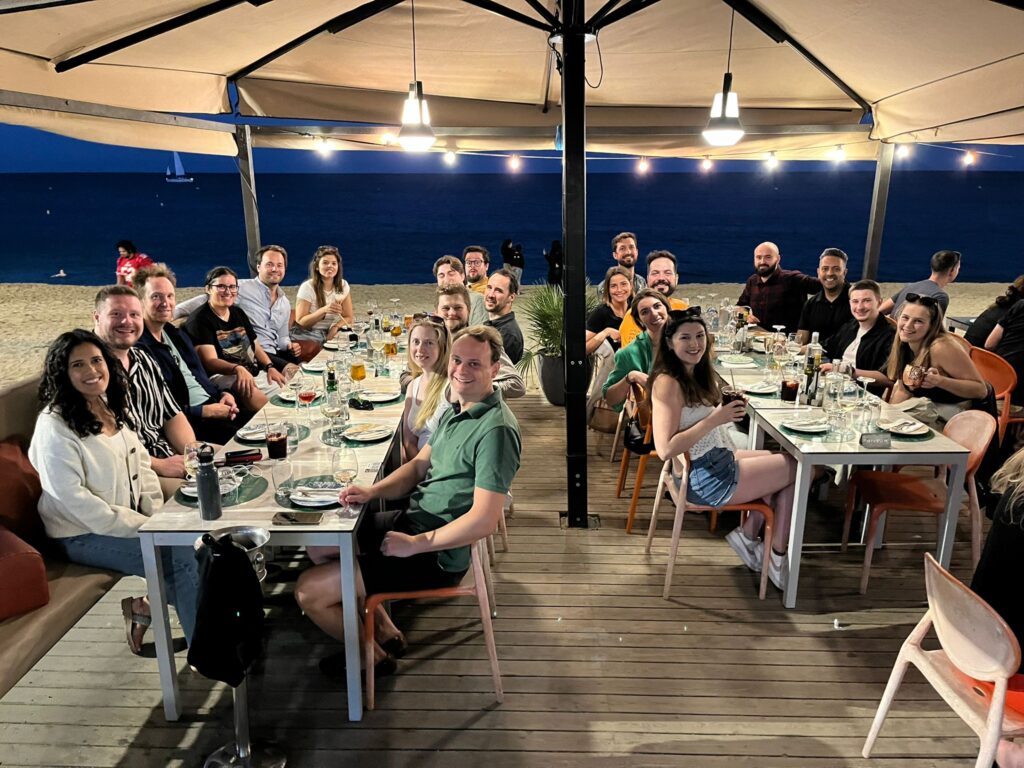The Power of 3D / Web GL for Luxury Property Websites
In the competitive world of real estate, capturing a prospect’s interest is more challenging than ever. Property developers often need to generate interest and sales before they’ve even broken ground, and so websites play a crucial role in getting potential buyers to feel connected to a property before they’ve even set foot inside.
To forge genuine connection, and because purchasing a property is an emotional and personal decision, a real estate website needs to go beyond just being a digital brochure; it must drive an emotional response in the audience by helping them envision their future there through an experience that feels immersive, engaging and multidimensional.
Of all of our recent projects in the luxury real estate sector, the ones that have got us the most excited are those which have embraced the opportunities of cutting edge web technologies such as Web GL. Web GL and three.js allow us to take 3D assets and architectural models (which have generally already been created for the project by architects or visualisation agencies) and transform them into rich, multi-layered immersive web experiences that bring properties to life in an exciting and engaging way.
Interested to know more? Here are 5 ways that 3D and Web GL can enrich a real estate website:
1. Interactivity
Web GL allows us to render 3D assets directly within a browser, without the need to download any special software. This enables us to transform 3D architectural models into interactive experiences which put users in the driver’s seat, ranging from slick and refined changes of perspective which are reactive to the user’s mouse, such as what we created for the Amali island teaser site , to full 360 perspectives which allow users to explore from all angles and seamless transitions between exteriors and interiors, such as in this prototype site for a new multi unit development.
By allowing users to navigate through properties at their own pace and from different perspectives, they can get a greater feel of the space and architecture and connect to it in a way that is not possible through 2D images and video.
2. Creating Atmosphere
In a world where AI is driving the creation of more and more computer generated imagery, audiences are more discerning than ever. To cut through this, Web GL can be used to create elevated experiences which help to cultivate atmosphere, which helps bring a real world and high-end/premium feel to the site.
For example, Web GL can enable a user to explore how a property interacts with natural elements such as sun position, shadows, weather conditions, seasons, or time of day/night, or investigate its relationships with its urban surroundings such as reflections, streetlights, nearby amenities or different views of the surrounding city.
All of these help communicate the different moods and expressive atmospheres of the property, evoking how its natural and urban contexts help to shape its personality. We love this example of a villa where users can explore the property from all angles whilst also being able to customise the property’s relationship to light, shadows and reflection at different times of day and year.
3. Reinforcing your Architectural Vision
We know that the architecture and interior design are fundamental drivers of interest and intent in any real estate purchase, particularly at the luxury end of the market. Both are by their very nature best experienced three dimensionally, and so Web GL experiences are the best method to authentically communicate the creative visions of the project’s architects and interior designers online.
Architectural principles such as volume and light, rhythm and movement, and transitions between interiors and exteriors can all be communicated most meaningfully through 3D. Check out this interactive experience which allows the user to dissect different floors and structural elements of the building to understand more about specific architectural choices.
4. Showcasing Textures and Materials
High-quality 3D models of properties can enrich and showcase the finer, more detailed elements of your design choices, such as textures, finishes, and materials. At the top end of luxury, the details and intricacies are often crucial to the uniqueness and quality of the final product, and so putting in the effort to ensure these come to life online is well worth the effort.
This Quarry house experience showcases how 3D experiences can allow users to get up close and personal and really witness the details, such as the marbles of a kitchen top or bathroom, or the grooves in the wood of the coffee table. These details breathe life into the visualisation and elevate it beyond what a 2D image is capable of achieving.
5. Dynamism
Knowing that potential buyers return to websites multiple times as part of their purchase journey, it is important that the site continues to surprise and delight them. With Web GL, we are able to render different conditions every time the page loads, ensuring a non repetitive and dynamic experience.
For example, we could set up functionality that ensures the lighting of the property is responsive to the real time of day that the user is looking at the website, whether that be a sunny morning, a dramatic sunset, or a polished night time reflection. In doing so, we can ensure the website experience stays fresh every time and continues to drive ongoing excitement.
In a marketplace where luxury is often oversold, creating an engaging Web GL website offers a differentiated experience that is immersive, innovative and high-end. All of these work together to forge an emotional connection with your audience, driving purchase intent and helping turn website visitors into prospective buyers.
Interested to learn more? Get in touch here.













